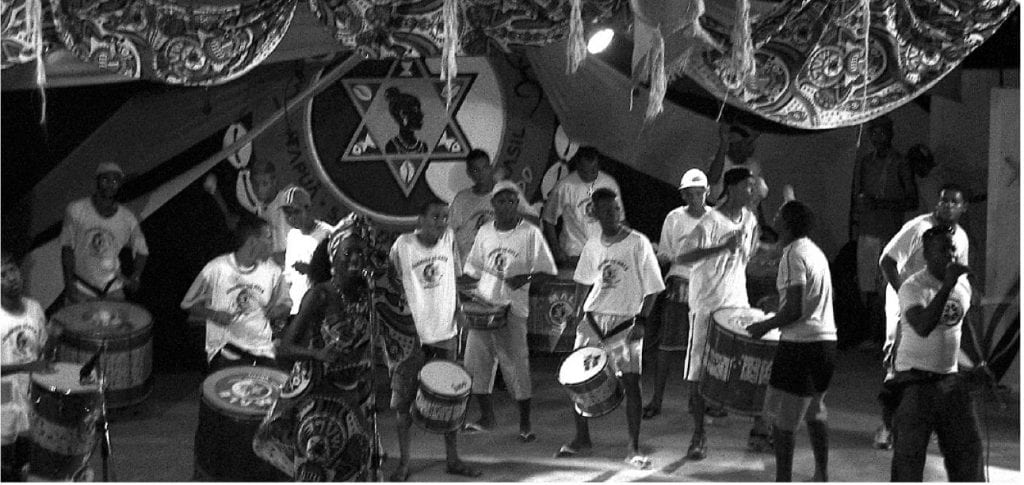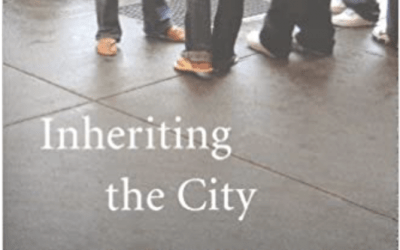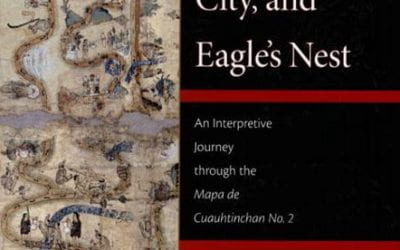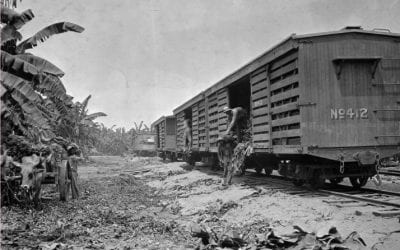From Selma to Salvador
African-American Echoes in the Brazilian Movimiento Negro

Bloco-afro Malê Debalê disseminates black pride. Afro-bahian musician Carlinhos brown observed the importance of James brown’s music and even how it inspired a word brau, to be a soul brother (Ari lima, “black or brau” in Brazilian Popular Music and Globalization, p. 227). Photo courtesy of Kavita Shah
When James Brown released “Say It Loud: I’m Black and I’m Proud” in 1969, little did he know that his music, his swagger, and his style would play a prominent role in Brazilian blacks’ struggle for self-affirmation.
Brown certainly wasn’t the sole catalyst of the Brazilian movimento negro, which has yet to experience a large-scale, organized black movement as the United States did in the 1960s. Yet, Brazil—the country with the largest black population outside of Africa—did manage to find inspiration in the U.S. civil rights movement and in 1960s culture, particularly through its music.
In this epic decade for black liberation worldwide—along with all other sorts of liberation—Brazil underwent a fundamental shock that would put the brakes on such movements. In 1964, a coup d’état funded by the U.S. government ousted the populist President João Goulart from office, giving birth to a military dictatorship that would last for more than two decades. The coup cut short progressive foreign policy toward Africa begun by President Jânio Quadros in 1961, including the establishment of Brazilian embassies in West Africa, the appointment of Brazil’s first black ambassador (posted to Ghana), and the creation of scholarships for African students to study in Brazil. During the especially repressive years of the military dictatorship in the late 60s and early 70s, the linhas duras, or hard-liners, cracked down on activists of all kinds, creating a climate of fear for Afro-Brazilians looking to organize.
The Black Power movement was not only combating a dictatorship, but also the predominant ideology of “racial democracy” in Brazil—that the nation’s high percentage of racial mixing precludes the existence of racism, discouraging any international (or intranational) political association with blacks of the African diaspora. Music played a seminal role in disseminating this myth, especially the samba, which itself blends Afro-Brazilian rhythms and dance forms with European harmonization. Looking to promote inherently Brazilian—and therefore racially mixed or “mulatto”—cultural forms, the government of Getúlio Vargas was quick to patronize the samba schools of Rio de Janeiro in the 1930s with state funds, a practice that continues today. (Incidentally, this act effectively popularized Carnival, which in years prior was a festival restricted for the white elite.)
“Aquarela do Brasil” (“Watercolor of Brazil”), known simply as “Brasil,” is perhaps the most symbolic anthem of the Vargas era, made famous by Disney’s 1942 film short of the same name in which Donald Duck travels to Rio and is entranced by cachaça, voluptuous women resembling Carmen Miranda, and the exotic rhythms of the samba. The lyrics of “Brasil” capture the spirit of racial democracy:
Brasil
Meu Brasil brasileiro
Meu mulato inzoneiro
Vou cantar-te nos meus versos
Ô Brasil, samba que dá
Bamboleio, que faz gingá
Ô Brasil do meu amor
Terra de Nosso Senhor
Brazil
My Brazilian Brazil
My rogue mulatto
I will sing of you in my verses
O Brazil, samba that gives way
Swing, that makes one sway
O Brazil of my love
Land of Our Lord
It was this image of Brazil’s racial paradise that Americans once hailed as a model to strive for. While both nations were founded upon the forced enslavement of millions of Africans, contemporary race relations in Brazil were, in comparison to the United States’ rigid “one-drop” system, seemingly fluid and unmitigated by the state. Events like Bloody Sunday—the 1965 confrontation at Selma, Alabama, made famous by images of state troopers tear-gassing and assaulting civil rights marchers—were simply unthinkable in Brazil. That said, racism in Brazil was widespread, albeit in a more subtle form. A 1950s UNESCO study, intended originally to demonstrate an example of racial harmony in the wake of the Holocaust, found that race-based discrimination in Brazil was a common barrier to social mobility. Other studies found racism to be alive and well in places of entertainment and employment, with companies advertising for employees with a boa aparência (“good appearance”)—which meant something other than wearing a suit and tie.
Whereas in the United States, black institutions like churches and universities served as pivotal meeting grounds during the civil rights movement, the lack of de jure segregation in Brazil actually reinforced the myth of racial democracy. By the end of the 1960s, the United States saw the rise and fall of two eminent black leaders (Martin Luther King, Jr. and Malcolm X), and the enactment of civil rights legislation enshrining equal-opportunity and voting rights for blacks. Brazil, on the other hand, accomplished little toward alleviating social inequality for Afro-Brazilians, let alone recognizing that such a thing existed. The 1968 Ato Institucional No. 5 marked the beginning of the most repressive years of its military dictatorship; among other things, the decree suspended habeas corpus, the right to protest and to organize, and it declared censorship of the media, including music (the popular music duo Gilberto Gil and Caetano Veloso were put under house arrest and exiled the following year).
Yet gains for Black Power abroad during the 1960s had a strong effect on Afro-Brazilians, especially through the music, images, and iconography of the African Diaspora that proliferated in Brazil during the late 1960s and 1970s. Tropicalismo, a countercultural movement associated with the leftist intelligentsia of Rio de Janeiro and São Paulo, is associated with the music of Gil and Veloso (Gil is black and Veloso, white), dubbed tropicália, which fused Brazilian sounds with rock and addressed political themes—especially race—in its lyrics. Gil sported an afro hairdo onstage and often wore an African tunic during performances, resonating with an international black aesthetic and political posture. On a more populist level, soul music, especially that of James Brown, gave rise to the Black Soul movement of Rio de Janeiro, which was characterized by festivals in the súburbios (suburbs, which in Brazil are usually poor shantytowns located outside of metropolitan centers). Some of these parties were called “Noites do Shaft” (“Shaft nights”) after U.S. blaxploitation protagonist John Shaft.
Black Soul was criticized by some as lacking cultural authenticity, infiltrated by a foreign musical form not indigenous to Brazil, and therefore irrelevant to the project of racial democracy. But soul continued to gain popularity, and it spread north to Salvador, Bahia, a city far poorer and less developed than the cosmopolitan centers of the Southeast. With a black population estimated at more than 80%, Salvador—the blackest city in the world outside of Lagos—is literally and figuratively located at the margin between Brazil and the Black Atlantic world. In addition to soul music, affirmative slogans from the U.S. black power movement—often witnessed in Brown’s songs like “Say it Loud”—formed the core of blackitude baiana. “Black is beautiful” and “black power” took on local Brazilian meanings associated with a larger cultural movement. James Brown, who had a provocative style and attitude, even had a word named after him: in 1970s Salvador, to be a brau was to be a soul brother, a Bahian who consumed U.S. black culture, wore an afro, colorful clothing, and was versed in black politics. By aligning themselves with U.S. blacks, Afro-Brazilians were stepping out of the norms dictated by racial democracy, and even local norms of Afro-Brazilianness. They were affirming themselves as black in a modern, cosmopolitan sense of the word.
As Afro-Bahian musician Carlinhos Brown, who grew up in Salvador during this time, has commented: “I didn’t understand anything [James Brown] was singing, but I understood how he acted, and everyone understood that, because his dancing, the way he danced, dragging himself along, you know, was like… a dribble around social things, going down to the floor, using his whole body like a movement. When you came to Liberdade, some guy would always challenge you: Draw a line! And he’d dance a circle. So if you danced cool, if you did a novel step, it was alright. If not, everyone messed with you and stuff—‘you aren’t brau, man!’” (Ari Lima, “Black or Brau” in Brazilian Popular Music and Globalization, p. 227).
Alongside this cultural celebration, a new black political movement was taking shape, thanks in part to the abertura, or “opening” period, of the military dictatorship that began in the late 1970s. The Movimento Negro Unificado (Unified Black Movement, MNU) was established in 1978 in São Paulo to address issues faced by Afro-Brazilians such as police brutality, economic disparity, and racial discrimination.
The MNU also took hold in Salvador, and it was in this political and cultural atmosphere so influenced by U.S. black culture and politics that groups known as bloco-afros (“afro-blocs”) formed. Still the most prominent cultural component of the movimento negro today, the blocos took on musical idioms and political postures identifying with the African diaspora. The musical style of the blocos-afro, for example, is known as the samba-reggae for its fusion of the two forms. (It is interesting to note that in the 1960s, radio programs in the United States broadcast African-American popular music to Jamaica, when roots reggae was reaching its height.) Furthermore, like Rio’s samba schools, the blocos-afro, perform yearly in Carnival and operate mostly in the Afropolis’ periferias, or poor peripheral neighborhoods. As such, they have taken on socio-educative roles in the movimento negro, serving as physical community spaces for local Afro-Brazilians to gather, share ideas, and disseminate black pride through dance and music. One such group, Malê Debalê (est. 1980), today boasts a public elementary school on its grounds, where local children have the opportunity to participate in the bloco’s cultural activities.
In recent years, Malê released a song called “Aquarela Negra” (“Black Watercolor”), which can be seen as a re-appropriation of “Aquarela do Brasil”. Here, composer Marcos Alafin speaks directly to international—not national—black—not mulatto—figures. He says, of Martin Luther King, Steve Biko, Toussaint L’Ouverture, and Afro-Brazilian historical leaders Zumbi and Zeferina: Essa é a nossa aquarela negra, negra, negra / Esse é o nosso universo das canções (“This is our black, black, black watercolor / This is our universe of songs.”) The legacy of the 1960s and the spirit of black liberation are evident in these lyrics. As one dancer from Malê Debalê told me in 2007, her hair is best worn braided, bem black power(literally, “really Black Power”), in Carnival. Though connected to the U.S. Black Power movement through an inherited aesthetic, something in that phrase is left from the original meaning, if only the English words.
Related Articles
A Review of Inheriting the City: The Children of Immigrants Come of Age
As an immigrant trying to understand urban diversity here, I come back time and again to the U.S. writer E.B. White’s often-cited passage in Here is New York (1948) in search of useful clues. “There are roughly three New Yorks. There is, first, the New York of the man or woman who was born there, who takes the city for granted and accepts its size, its turbulence as natural and inevitable. Second, there is the New York of the …
A Review of Cave, City, and Eagle’s Nest: An Interpretive Journey through the Mapa de Cuauhtinchan No. 2
The publication of Cave, City, and Eagle’s Nest is an exceptional achievement, bringing into the light a tremendously important but formerly obscure Mesoamerican codex or pictographic text. Analogies to the (re)discovery and interpretation of the Dead Sea Scrolls are not unwarranted insofar as the book marks the reemergence of a fabulous and fabulously significant 500-year old document—the Mapa de Cuauhtinchan N…
Making A Difference: Repatriating Photographs
I first learned of the United Fruit Company’s operations in Colombia, like many people, when I read Gabriel García Márquez’s 100 Years of Solitude and its description of the 1928 massacre of banana workers in Santa Marta. A few years later, I was researching United Fruit for my dissertation, and was met with a wall of silence when I tried to contact the company to gain access to its records. Several other scholars including Philippe …




